Welcome
DIG is a hands-on archaeological adventure giving kids the chance to become trainee archaeologists and discover the most exciting artefacts from 2000 years of York’s history! With four special in-door excavation pits, all based on real-life archaeological digs in the city. Filled with replica Roman, Viking, Medieval and Victorian finds, children can grab a trowel and explore how people lived in these times. DIG is a very adaptable, tactile learning environment and warmly welcomes all disabled visitors! For any adults wanting to visit DIG, we offer DIG Deeper - a tour created especially for adults offering an in depth look look. Please book on the last tour of the day.
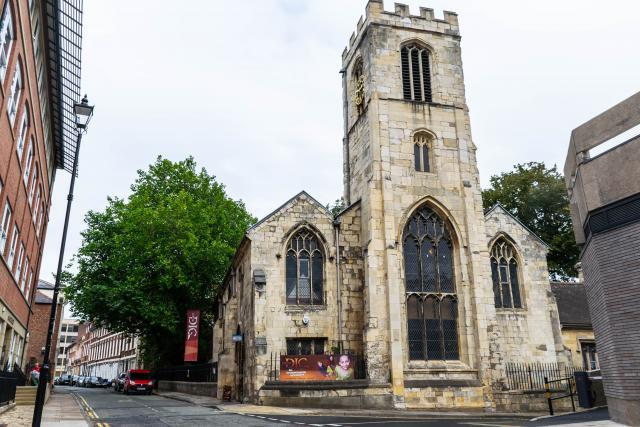
Level access
There is level access from the main entrance to:
Discover Archaeology - Pod AreaDig sitesLittle Diggers - Under 5's AreaFront DeskAccessible ToiletMain shopNave exhibitionExhibition GalleriesCommunity GalleryClassroomLunch roomSensory GardenHearing
Visual
General
Getting here
Travel by public transport
York is on the East Coast main line between London and Scotland. It takes less than two hours to get to York from London. Trains run every half an hour, with at least 25 direct trains each week day.
Direct rail services also run to York from many of the UK's main regional centres. York can be reached easily from all the following centres: Edinburgh, Glasgoe, Birmingham, Bristol, Leeds, Manchester, Newcastle, Nottingham, and Liverpool. There are direct trains to and from Manchest International Airport that run every hour during the day.
Travel by taxi
Parking
Prices for admission are:
Adult £9.00
Child (4-16) £8.25
Concessions £8.25
Family 4 (two adults, two children) £28.50
Family 5 (two adults, three children) £33.00
We also offer free admission to Max card holders and carers.
Additionally, we offer a Pastport Ticket which allows free admission to DIG, JORVIK Viking Centre, and Barley Hall and the City Walls Experience for unlimited access for a year. Prices for our Pastport Ticket are:
Adult £21.75
Child (5-16) £16.50
Concessions £18.75
Family 4 (two adults, two children) £65.00
Family 5 (two adults, three children) £75.00
All tickets are valid for a full 12 months and allow for unlimited re-entry, even on the same day if you need to take a break.
Arrival
Path to main entrance
Main entrance
There are two glass doors at the entrance that swing both directions and, weather permitting, they are kept open during operating hours. They are not motorised - however, immediately inside is a permanently staffed admissions desk, and staff members are always happy to help with the door if needed.
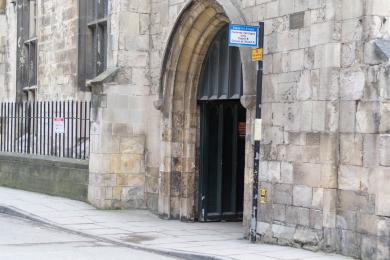
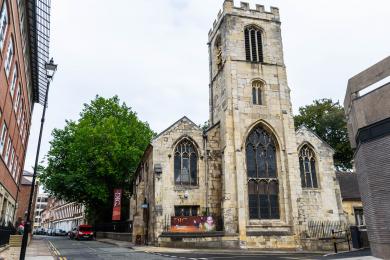
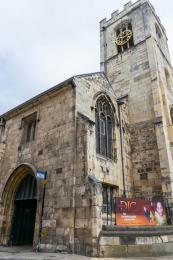
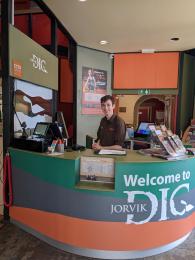
Getting around inside
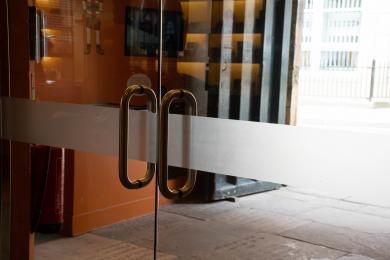
Lift
Lift to all floors
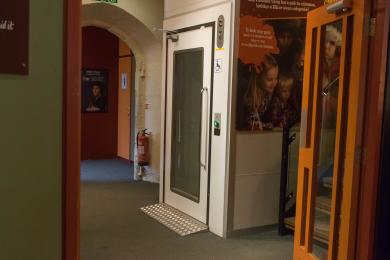
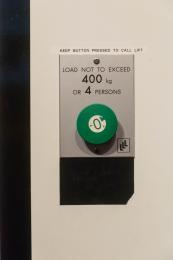
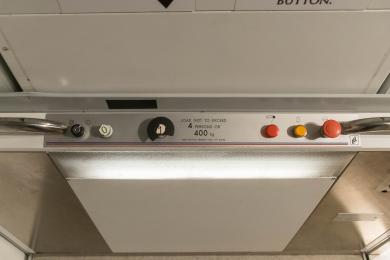
Ticket/ information desk
Front Desk
Our admissions area has a flagstone floor so it is not a perfectly smooth surface.
Generally there is not a queue for DIG, but in the event of a queue, disabled visitors or visitors with additional access needs do not have to wait in the queue. Please make yourself known to the staff member at the desk and they will serve you as soon as possible.
There is full wheelchair access throughout DIG. Due to numbers restrictions on tour, these may be limited per tour but not for access to the building.
On entering the building, the staff member on the desk will ask for the name of your booking and your reference number. If you have any discounts, such as a Max card, you may be asked to show proof of eligibility. This simply means showing your Max card, NHS staff card, or similar card.
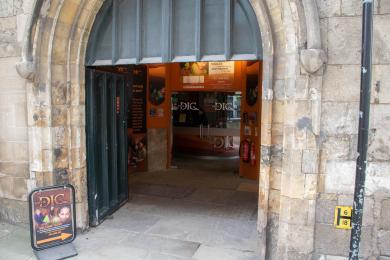
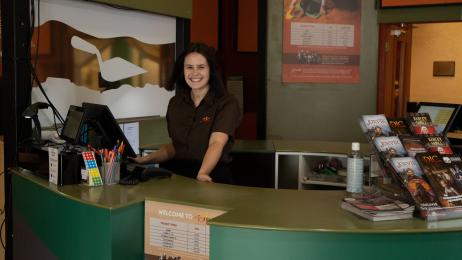
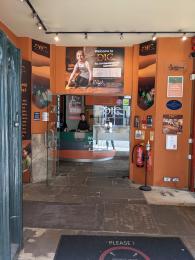
Things to See and Do
Discover Archaeology - Pod Area
This is where your tour begins.
One of our tour guides will speak to you briefly about the tour, explaining how it will work and giving safety instructions. They will also give you an introduction to what archaeology is and what archaeologists do. The tour guide will tell you about various aspects of archaeology, showing you some of the original artefacts from our excavations.
The floor is linoleum and flat throughout. The stools are
and the tables are
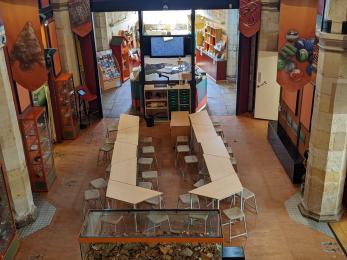
Dig sites
This is the second part of the tour. Four dig sites, each based on a different excavation site in York, are filled with rubber soil for visitors to dig around and uncover artefacts like a real archaeologist. Each dig site represents a different period: Victorian, Medieval, Viking, and Roman. There are low walls on three of the four dig sites, ranging from 100mm to 450mm tall. All the artefacts are stuck down to the floor of the dig sites, which is textured. There is a ramp and pathway alongside the dig sites that is flat and there are two level areas to rest wheelchairs in. There are also sieves, which are 890mm tall, on each dig site that allow visitors to sift through the soil and discover some small finds. There is also a handling collection that the tour guide may bring out, where visitors can touch replicas and real artefacts from these excavations.
Each visitor wishing to dig will be provided with a plastic trowel. Foam kneeling pad are available to use whilst digging. All trowels and kneeling pads are disinfected between tours. There are also long-handled trowels available for wheelchair users or those with reduced mobility.
Allergy note: in the Viking site, there are oyster shells, and we cannot guarantee there is no cross-contamination to the other dig sites, so anyone with a severe shellfish allergy should alert a staff member. We can provide non-latex gloves or find another suitable activity.
Throughout the digging experience, there is a foldable chair for those unable to stand for large amounts of time. The digging aspect of the tour lasts roughly for 30 minutes.
The floor is hard wood, but inside the dig sites, the ground is hard and extured, with some artefacts embedded in it. It is also covered in several inches of dig soil, which is made of rubber (recycled car tyres).
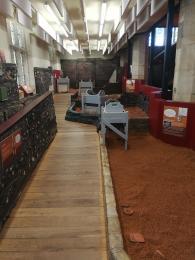
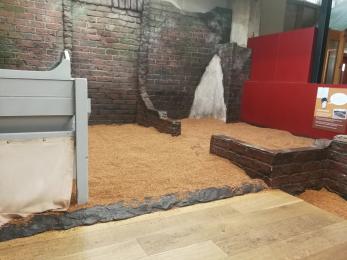
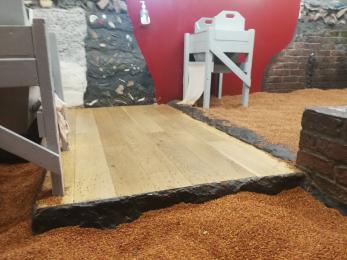
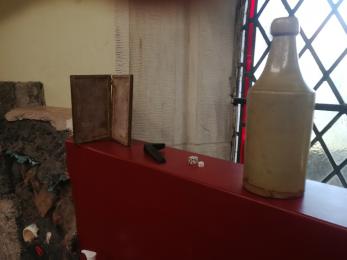
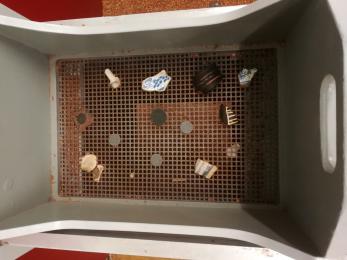
Little Diggers - Under 5's Area
Little Diggers is our Under 5's area where any younger visitors can either play during the first tour section or after their tour. There are a number of interactive toys and sensory items including calming sensory lights if needed.
The floor is linoleum and level throughout, with throw blankets, foam pads, and pillows scattered around the room.
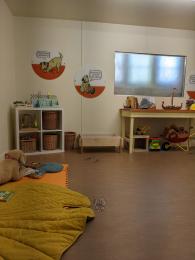
Public toilet
Accessible Toilet
The floor is tiled and level throughout.
The nearest Changing Places toilet is at EXPLORE York Library:
Museum Street
York
YO1 7DS
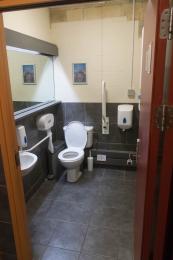
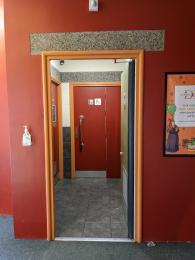
Shop
Main shop
Our shop area has a stone floor so it is not a perfectly smooth surface. Additionally, metal pillars which support the floor overhead are located within the shop and therefore reduce clearance around the shop. We are working to improve the accessibility of the shop within the building constraints we have.
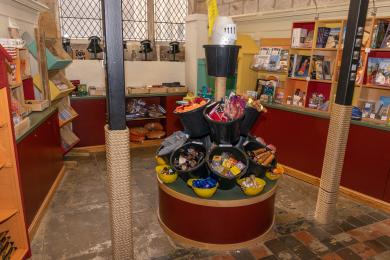
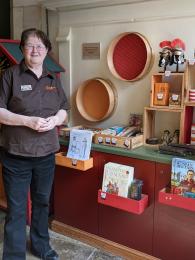
Nave exhibition
In the nave of the church, there is a temporary exhibition space. These exhibitions are ususally tied to archaeology or the York Archaeological Trust's work in the community.
The exhibition space has a linoleum floor and is level throughout - however at the back of the nave there is a raised platform. The edges of the platform are angled and the platform is
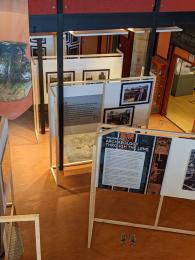
Exhibition Galleries
Our two exhibition galleries hold our newest installation: Eboracum - Life and Death in Roman York. There is a collection of Roman-era finds from excavations around the city, as well as some activities and a chance to sort real Roman pottery. There is also a human skeleton on display. There are two videos (no sound): one is about the 2017 Newington excavation and the other is a digital facial rescontruction of the skeleton that is on display.
Please note: the first room is carpeted, while the second room is tiled. There is a small lip between the two rooms as the flooring changes.
Also note: there are human remains on display in the gallery closest to the pod area. This gallery can be avoided if desired.
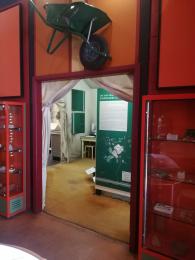
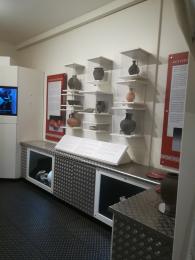
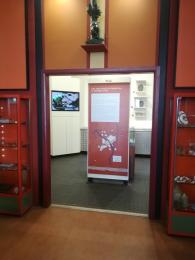
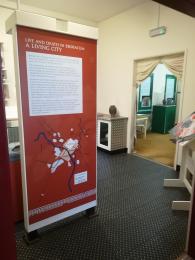
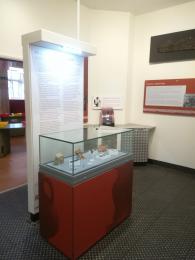
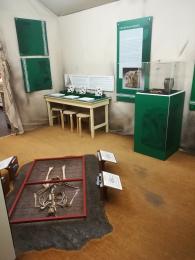
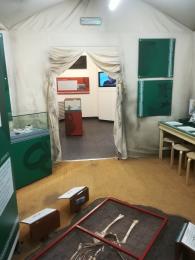
Community Gallery
Our community gallery is a temporary exhibition space that changes regularly. Hands-on activities are there, as well as a video and audio description of the text panels. The table in the room has 700mm clearance and space for wheelchair users to pull up to. The floor is wooden and level throughout.
Please note: this exhibition changes several times a year and some media may change with each new installment.
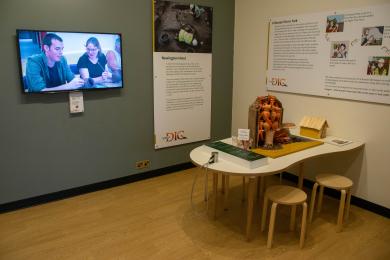
Classroom
This room is used by schools for their workshops. The inside changes according to the workshops needed, but when there are no schools using it, the room also doubles as a quiet space for anyone who needs it. The classroom is carpeted.
There are two closed doors between the classroom and the lift, but a member of staff will be with visitors to open the doors if they are using the classroom.
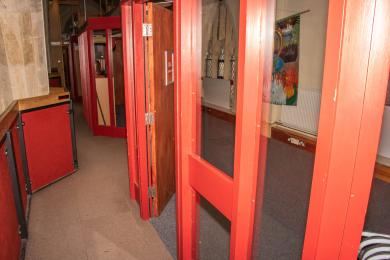
Lunch room
Our lunch room is a wide open mezzanine with tables and benches that can be set up for the use of visitors. When a school is in, this is where they have their lunch, and it can be difficult to maneuver when all the tables and chairs are set up. This is also where birthday parties have their food and cake. There is also a high table along the wall that can be used by visitors.
The floor is linoleum and level throughout.
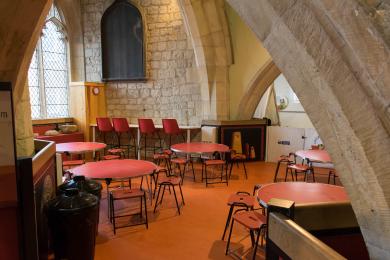
Getting around outside
Picnic Area
There is no car park on site, however the picnic area is accessed through the rear exit of the museum. The picnic tables are moveable and can be rearranged as needed. The paving in the picnic area is a combination of brick, re-used gravestones, and loose gravel. The tables are sheltered by a large chestnut tree and is a quiet area of town.
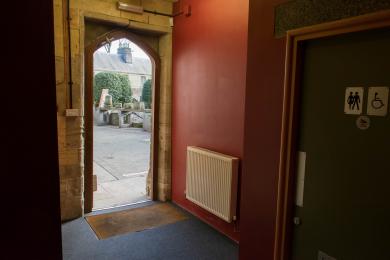
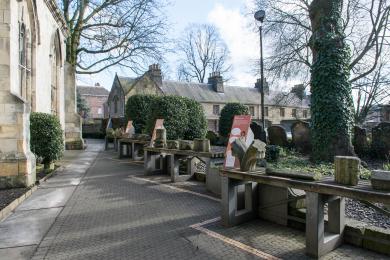
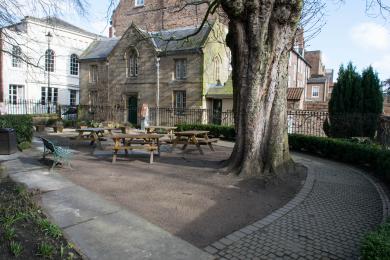
Sensory Garden
Our garden outside has been designed specifically as a sensory experience. With a wide variety of colours, smells, and textures, as well as archaeological information, it is a fun and informative experience. There are plants that were used as medicine in the past, some examples of Medieval stonework that can be touched, and an array of wildlife that comes to the garden as well.
Allergy note: as we have flowering plants, we often have bees and sometimes wasps in the garden. Please use with caution if you are allergic to bees.
Customer care support
We also provide ear defenders, a number of folding chairs around the museum, large print guides, visual stories, and subject to availability, we have a quiet space.
Sensory packs are available at all our admissions desks subject to availability on the day. They contain a set of ear defenders and various tactile & visual items, including fidget/fiddle objects. Some of the items in the sensory pack are also available in our shop.
Breastfeeding is welcome at all our sites.
Emergency evacuation procedures
DIG is located inside a Grade II* listed medieval church and has a very open floor plan. In the case of emergency, staff are trained to help everyone evacuate quickly and efficiently, including disabled visitors.
Customer care support
All DIG tours are fully guided by a member of staff and therefore are personalised depending on the group. All of our tour guides have recieved Welcome Host Plus training as well as Blue Assist training. As a team, we are currently learning BSL with the aim of providing BSL tours on request as well as BSL enhanced tours on a regular basis. Some tour guides also have Dementia Friends training and Autism Awareness training, and we are working on making sure all tour guides are trained in these. DIG, along with all the other attractions in the JORVIK Group, has recently been awarded the Autism Friendly Award by the National Autistic Society. We also were awarded the 2020 Visit York Award for Accessible and Inclusive Tourism.
DIG is a very hands-on experience with an emphasis on tactile learning. Our tour guides are incredibly knowledgable in accessibility and are working constantly on making DIG as inclusive and accessible as possible. For further information, do not hesitate to email or call or even stop in and speak to a member of staff. Breastfeeding is welcome at all our sites.
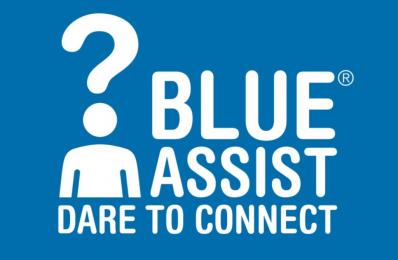
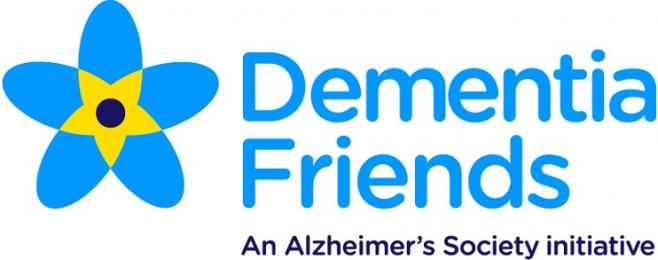

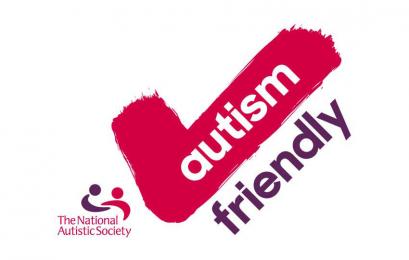
DIG operates a traffic light sticker system for visitors should you wish to participate. If you are wearing a red sticker it shows you do not wish to be approached; a yellow sticker means you would like staff to answer questions when asked; green or no sticker means you are happy to be approached and spoken to. Please speak to a member of staff if you would like a sticker to use.
All of our tours are led by trained staff members, and are naturally personalised to the group. However, if you wish to have a tour tailor-made for your group, please email access@yorkat.co.uk or schools@yorkat.co.uk to discuss details. We have hosted tours for the RNIB, for autistic visitors, for wheelchair users, and for visitors with learning disabilities and are happy to create a specialised tour for your group as well!
Max card holders are entitled to free admission, and all carers are admitted free of charge.
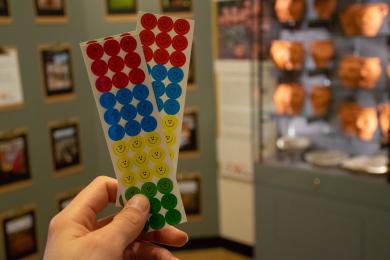

 Download this guide as docx
Download this guide as docx